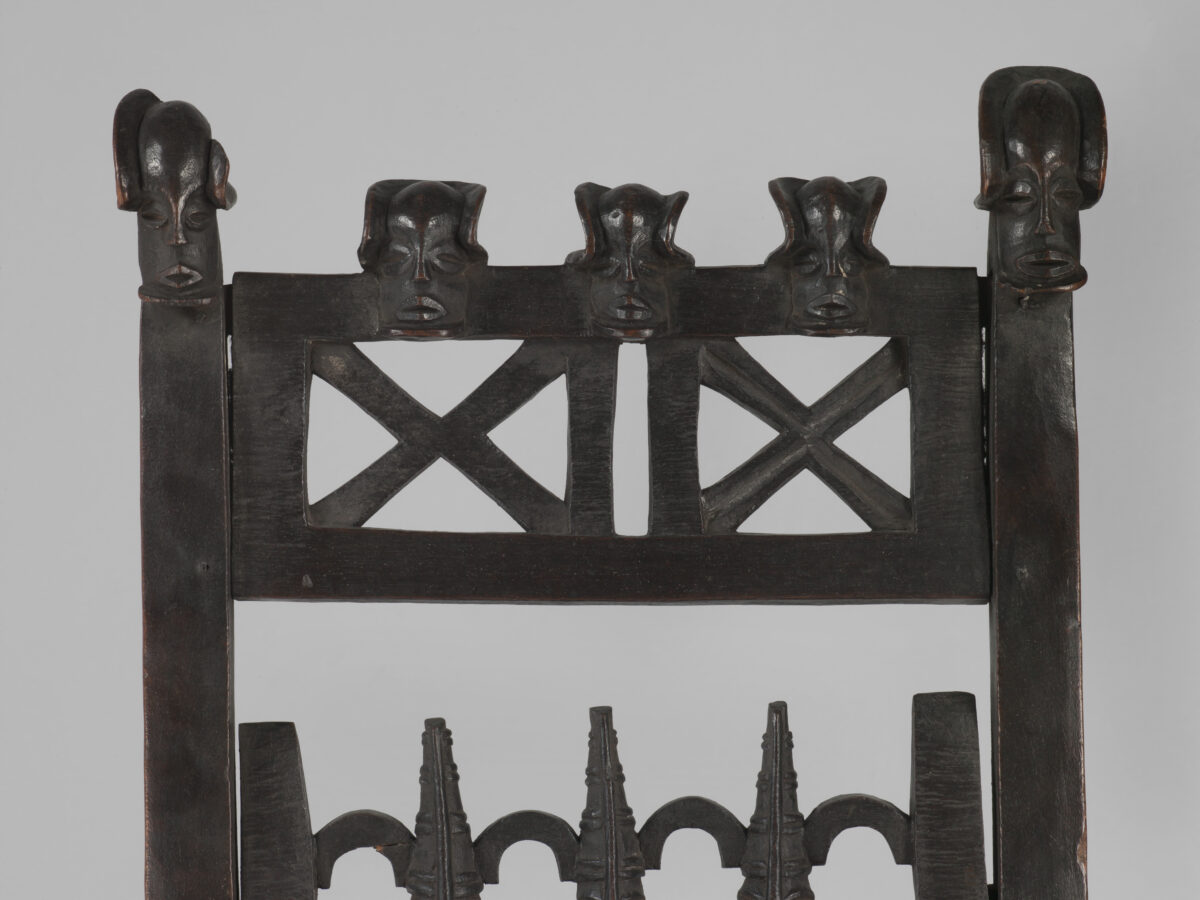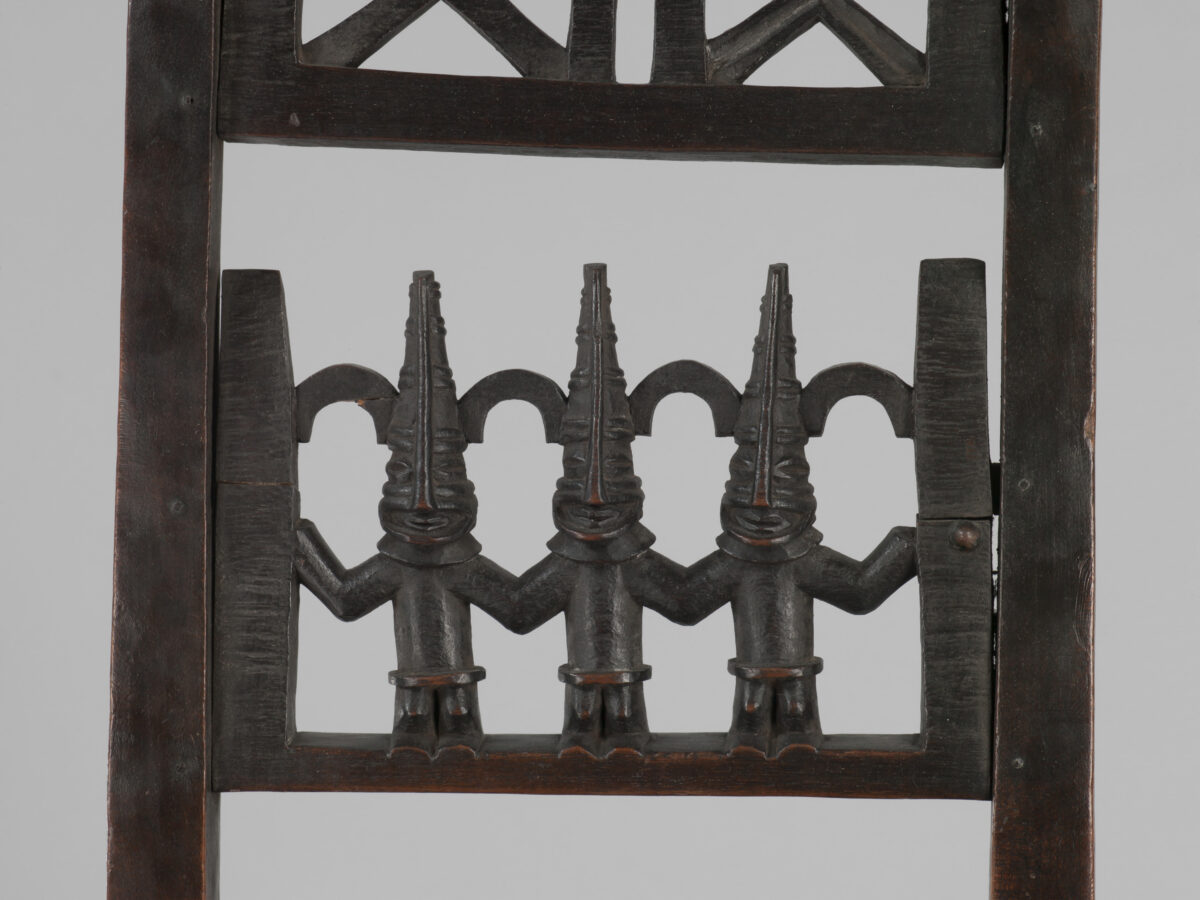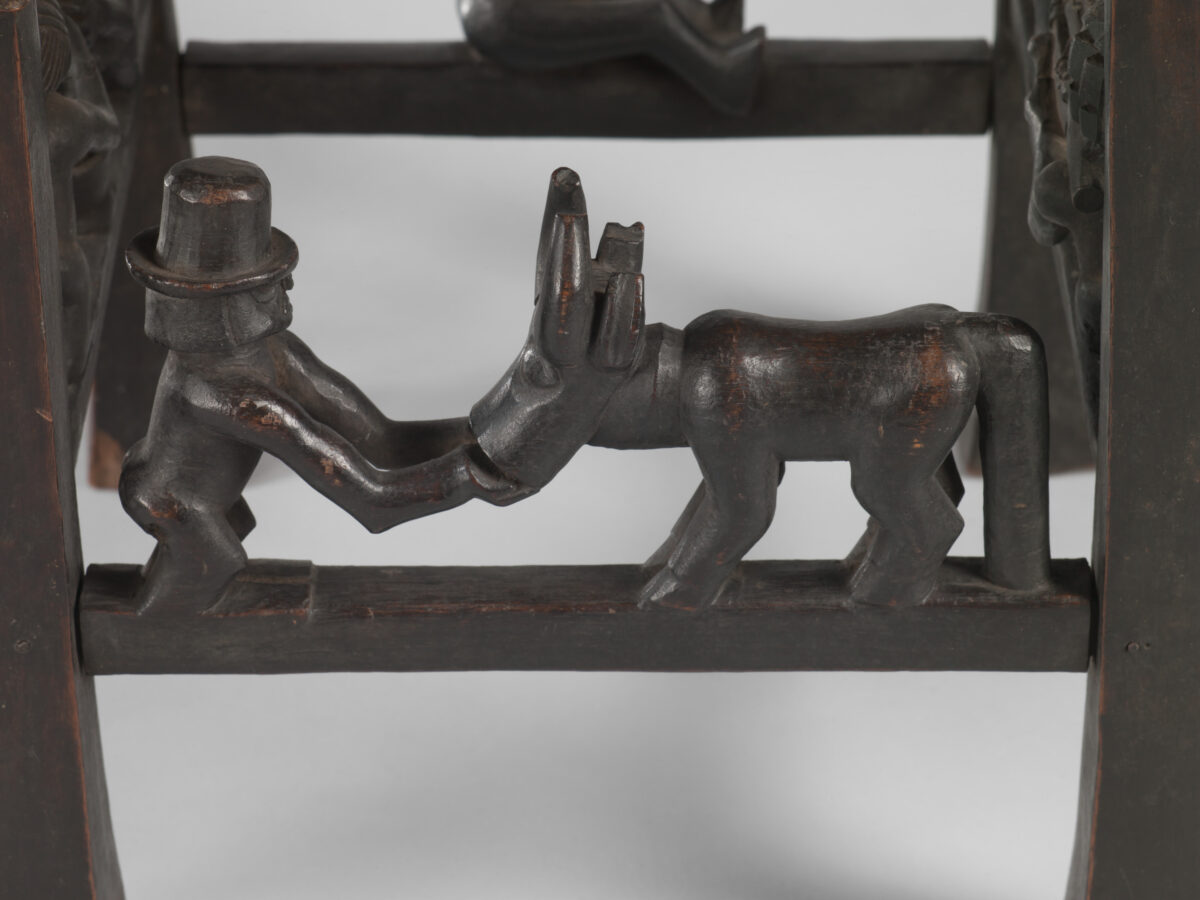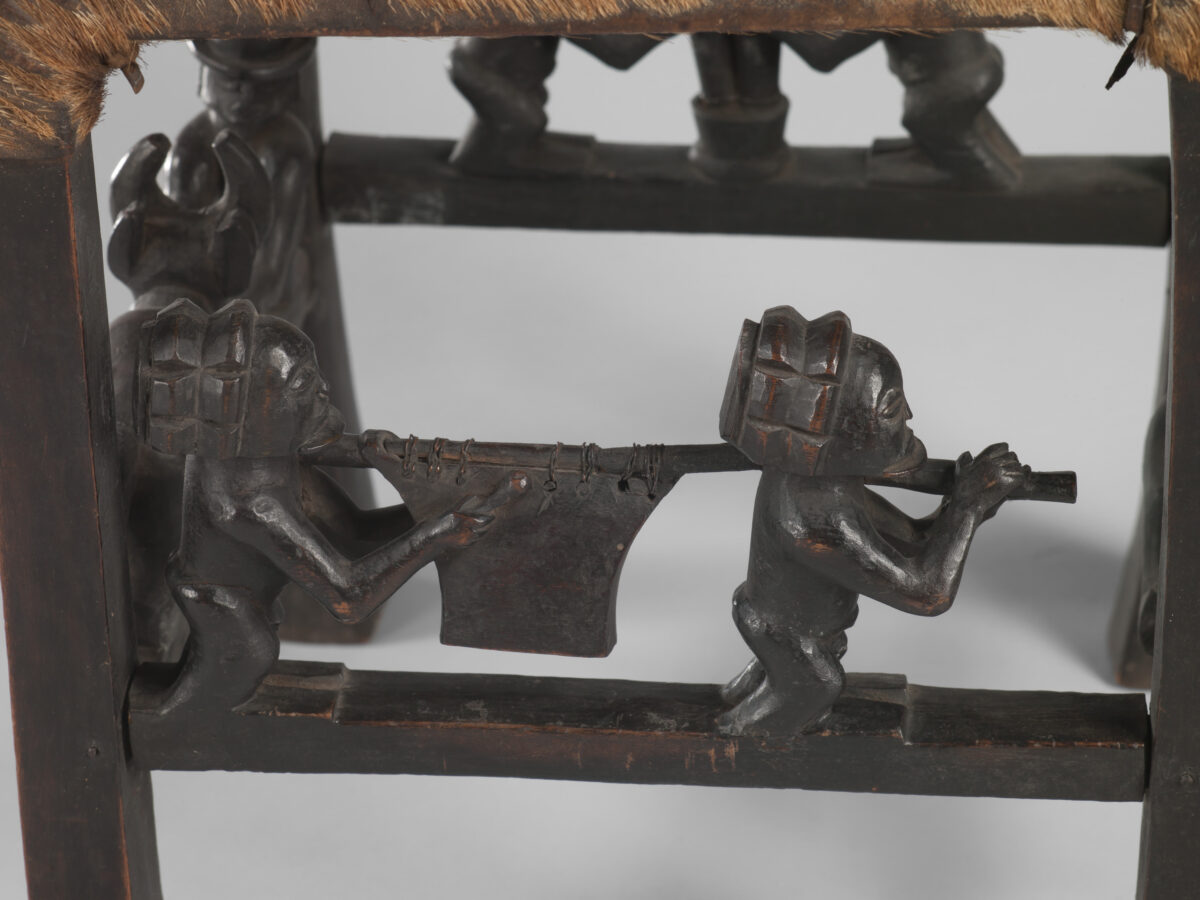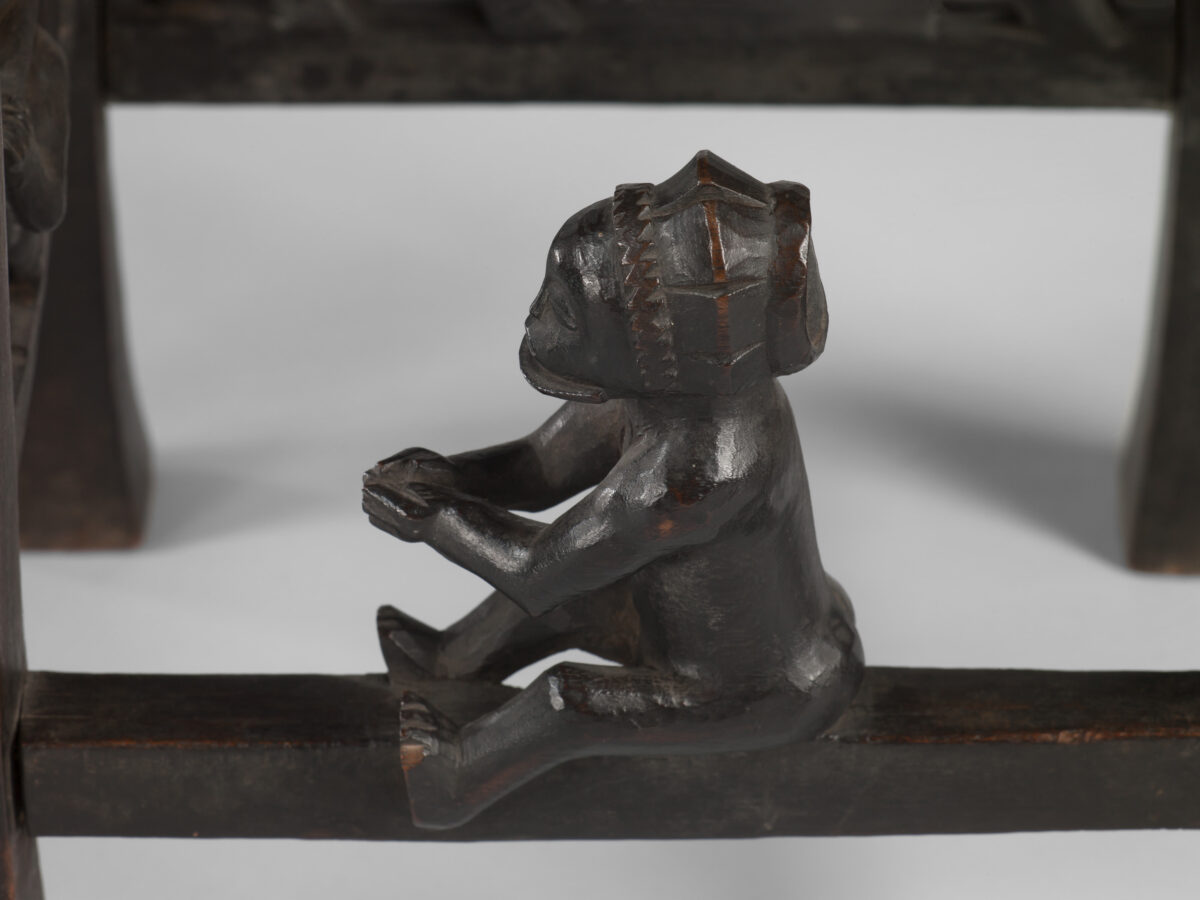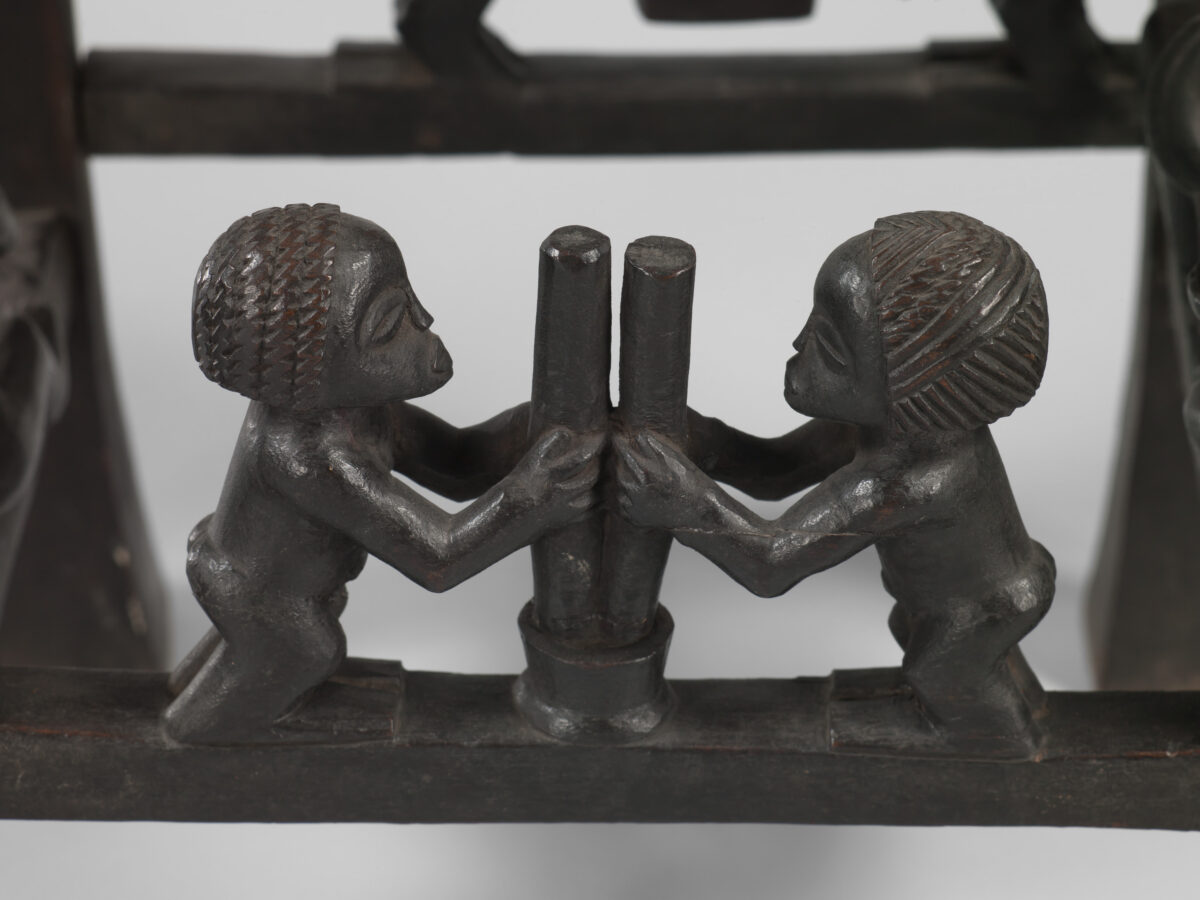Chief’s Chair
- Culture
- Material
- Wood, brass, hide
Chokwe artist, Angola; Chief's Chair (detail), 19th century; wood, brass, hide; 29 1/4 x 11 x 17 1/2 inches; Saint Louis Art Museum, Museum Purchase 7:1943
Standing almost 30 inches tall, made of wood, brass, and hide, and featuring intricate carvings along the top and base, a chair helped inspire the largest SLAM-organized exhibition of sub-Saharan African art.
Made in Angola in the 19th century, the Museum acquired the Chokwe Chief’s Chair in 1943. Exhibition curator Nichole N. Bridges, the Morton D. May Curator of the Arts of Africa, Oceania, and the Americas, said it’s been a conversation topic in the collection galleries ever since—so much so that it played a key role in her development of Narrative Wisdom and African Arts, on view through February 16.
Chokwe artist, Angola; Chief's Chair, 19th century; wood, brass, hide; 29 1/4 x 11 x 17 1/2 inches; Saint Louis Art Museum, Museum Purchase 7:1943
Narrative Wisdom acknowledges the intersections between certain historical arts and oral traditions. The Chief’s Chair is on display in the section titled “Leadership and Power Play.” Kings or chiefs reinforced the oral histories that legitimized their rule, or pronounced their larger ambitions and legacies by commissioning works of art, like this chair, that would inspire and endure.
As described in an essay by Bridges in the exhibition catalogue, five Chihongo masks, recognizable by a distinctive headdress, repeat across the crest rail of the chair. Chihongo represents a chiefly or royal male spirit, embodying a person of authority and wealth who could be the patron of such a chair. Across the center-back of the chair, three masqueraders representing the spirit Chikunza wear tall, conical masks. Chikunza’s name derives from a local term for a grasshopper with an elongated head. The mask’s ribbed, conical form also echoes an antelope horn and a phallus, suggesting an association with hunting and fertility as well as with a boy’s initiation ceremony into society.
Below the seat, four scenes of daily life appear along each rung: a top-hatted figure extending his arms to the mouth of a horned animal; two people carrying a slit drum, one of whom is beating the instrument with a mallet; a seated figure whose hands are folded in greeting; and two women preparing food with a mortar and pestle.
Chokwe artist, Angola; Chief's Chair (detail), 19th century; wood, brass, hide; 29 1/4 x 11 x 17 1/2 inches; Saint Louis Art Museum, Museum Purchase 7:1943
Chokwe artist, Angola; Chief's Chair (detail), 19th century; wood, brass, hide; 29 1/4 x 11 x 17 1/2 inches; Saint Louis Art Museum, Museum Purchase 7:1943
Chokwe artist, Angola; Chief's Chair (detail), 19th century; wood, brass, hide; 29 1/4 x 11 x 17 1/2 inches; Saint Louis Art Museum, Museum Purchase 7:1943
Chokwe artist, Angola; Chief's Chair (detail), 19th century; wood, brass, hide; 29 1/4 x 11 x 17 1/2 inches; Saint Louis Art Museum, Museum Purchase 7:1943
Chokwe artist, Angola; Chief's Chair (detail), 19th century; wood, brass, hide; 29 1/4 x 11 x 17 1/2 inches; Saint Louis Art Museum, Museum Purchase 7:1943
Chokwe artist, Angola; Chief's Chair (detail), 19th century; wood, brass, hide; 29 1/4 x 11 x 17 1/2 inches; Saint Louis Art Museum, Museum Purchase 7:1943
Appearing to neither reference nor represent a unified or sequential story, these “genre scenes” of daily life embody one sense of narrative as being fundamentally grounded in human experience, the catalogue explains.
In the case of the Chokwe chairs and other pictorial leadership arts on view in the exhibition, humble subjects are precisely there to support and convey a more heroic narrative. Therefore, Bridges writes in the catalogue, “the narrative is clear: the Chokwe chief is the hero; he is the quintessential ‘big man’—the patron who commissioned and owns the chair, who is the patron and overseer of his subjects and their activities (whether mundane or ceremonial), and who, in return, is supported by his citizens.”
Installation view of Narrative Wisdom and African Arts
The Museum’s chair and other similar Chokwe chairs on loan in the exhibition were inspired by European high-backed chairs imported as trade goods in the region since the 17th century. They were popular among Chokwe leaders during the 19th and early 20th centuries. Chiefs often sat alongside, rather than on, the chair during public appearances, allowing the audience to fully view the chair and recognize themselves—quite literally—among the social order under the leader’s purview.
This information was adapted from an essay titled “The Party Line and The People’s Parables: Leadership Arts Shaping Narrative” by Nichole N. Bridges in “Narrative Wisdom and African Arts.” The catalogue accompanies the SLAM-organized exhibition of the same name and is available for purchase online and in Museum shops.

